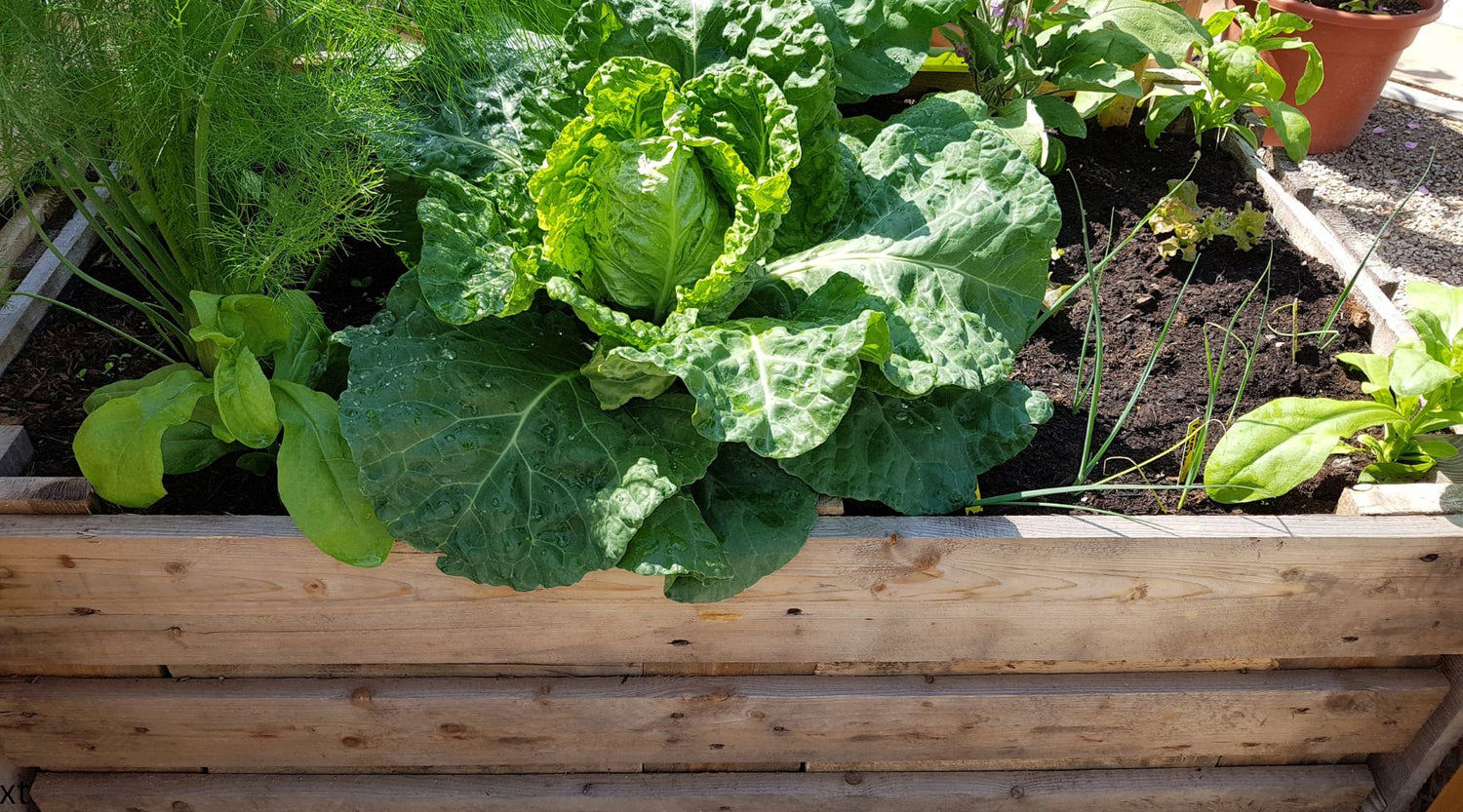Raised garden beds are transforming the way we think about gardening, offering a range of benefits that make them an appealing choice for both novice and experienced gardeners. Raised above the ground, these beds provide improved soil quality, better drainage, and easier access, allowing for healthier plants and more enjoyable gardening experiences. Whether you have a small urban space or a sprawling backyard, raised garden beds can help you maximise your gardening potential while reducing the physical strain associated with traditional ground-level gardening. Several of our raised garden beds, like the Greenfingers Modular 9 in 1 design are versatile and adaptable to different gardens sizes and shapes so you can design around any space limitations in your garden. Discover how raised garden beds can enhance your gardening game and bring a bounty of fresh produce, vibrant flowers, and lush greenery to your home.

Improved Soil Quality
One significant advantage of gardening in raised beds is the improved soil quality they provide. With raised beds, you can easily control the quality of your soil by adding or removing soil, nutrients, and mulch as needed. This means you can create the perfect growing conditions for your plants, resulting in healthier and more productive growth. Raised beds also allow for better drainage, reducing the risk of water logging and root rot. Additionally, gardening in raised beds minimises soil compaction, as you won't be walking on the growing area. This creates an ideal environment for root development, further enhancing plant health and yield. Raised beds also make it easier to implement organic gardening practices, as you can more effectively manage weeds and pests without resorting to chemical solutions.
Better Drainage
Another advantage of raised garden beds is better drainage. Excess water can drain away more easily, which helps prevent waterlogging and root rot that can damage your garden plants, herbs, and vegetables. This enhanced drainage is particularly beneficial in areas with heavy clay soil or regions that experience frequent rainfall. Additionally, the improved drainage reduces the risk of soil compaction, which can impede root development and limit access to essential nutrients and oxygen. As a result, plants in raised beds often exhibit stronger root systems, increased resilience to diseases, and overall better growth and productivity.
Fewer Weeds
Gardening in raised beds offers numerous advantages, one of which is significantly reduced weeding compared to traditional garden beds. By filling your raised beds with weed-free soil, you will encounter fewer weeds. The raised height of the beds not only improves accessibility but also makes it easier to spot and remove any weeds that do appear. To further minimise weed growth, adding a layer of weed matting to the bottom of your raised bed can be especially effective, particularly in areas prone to problematic weed growth. This approach enhances the overall gardening experience by reducing the time and effort needed for weeding, allowing you to focus more on growing healthy plants.

Easier Accessibility
Raised garden beds offer significant ease of maintenance due to their elevated height, which minimises the need for constant bending and stooping, thereby preventing backaches and reducing physical strain. This feature is particularly advantageous for gardeners with mobility issues, including the elderly and disabled, as it enables them to continue enjoying their passion for gardening without compromising their physical well-being. Raised beds provide a sense of freedom and independence, allowing individuals with physical limitations to maintain an active and fulfilling gardening experience.
Less Pests and Diseases
Gardening in raised beds offers numerous advantages, particularly in terms of pest and disease control. The elevated height of raised beds serves as a natural barrier, making it more difficult for pests to reach your plants. Raised beds can be easily covered with netting or other protective materials, providing an added layer of defence against insects and animals.
Certain pests, especially those that crawl or have difficulty climbing, such as slugs and ground-dwelling insects, find it harder to access plants in raised beds. This barrier reduces the risk of infestations and helps maintain healthier plants. Additionally, the controlled environment of raised beds allows for better management of soil quality and drainage, further promoting plant health and resilience against diseases.
Extended Growing Season
Raised beds effectively extend the growing season by warming the soil quicker in spring, enabling earlier planting and prolonging harvests. Moreover, their elevated height provides added protection against late-season frost, safeguarding your plants and ensuring continued productivity. With this extended growing season, gardeners can cultivate a wider range of vegetables year-round, taking advantage of the favourable microclimate within the raised beds. This versatility allows for successive plantings and the opportunity to grow seasonal crops that might otherwise be challenging in cooler conditions, thereby maximising the garden's yield and diversity.
Higher Yields
If you’re looking for a good return on investment, raised beds can lead to increased yields. By controlling the quality of your soil, providing good drainage, and reducing weeds, you can create optimal growing conditions for your plants. This can lead to higher yields and better-quality produce, saving you money and promoting better health.
Flexible Planting Options
Raised garden beds offer more freedom in terms of length, shape, height, and location. You can set them up in the spot of your choice, ensuring they receive the optimal amount of sunlight. Most vegetables and many other plants thrive in full sun, defined as at least six hours of direct sunlight per day. By strategically placing the raised bed, you can ensure your plants get the necessary sunlight for healthy growth and productivity. If you are looking for garden options for a small balcony consider our Vegepod Raised Garden Bed on wheels.
Attractive Garden Feature
Raised garden beds can be visually appealing and enhance the overall aesthetics of your outdoor space. By choosing the location of the bed, you can consider its visual impact and how it integrates with your existing garden design or landscaping. Placing it in a desirable location allows you to create a harmonious and visually pleasing garden layout. Raised beds are also available in many colours to complement your garden’s feel. Use your raised garden bed along fence lines to create great plant screening from the neighbours, or to segment areas of your garden. If you have the space set aside an area specific for the growing of your garden kitchen supplies.

Teaching Kids about Gardening
Getting kids involved in growing plants in raised garden beds is a great way to teach them about healthy eating, sustainability, and the environment. It's also an opportunity to spend quality time with your children while getting your hands dirty and enjoying the outdoors. We offer the perfect start-up kids raised beds to get them excited about gardening.
In conclusion, raised bed gardening is a low-maintenance and productive method of gardening. With improved soil quality, better drainage, fewer weeds, easier maintenance, an extended growing season, and increased yield, it's no wonder raised bed gardening is becoming increasingly popular among gardeners. Raised Garden Beds are an excellent option for anyone looking to start a garden or expand their existing garden space. While there is some initial outlay, they are durable, long-lasting, and look great in any garden setting. They will provide excellent produce for years to come.
We hope we've inspired you to get planting. To stay up to date with everything raised gardening, follow our social pages or subscribe to our monthly newsletter so you don’t miss our next blog!






